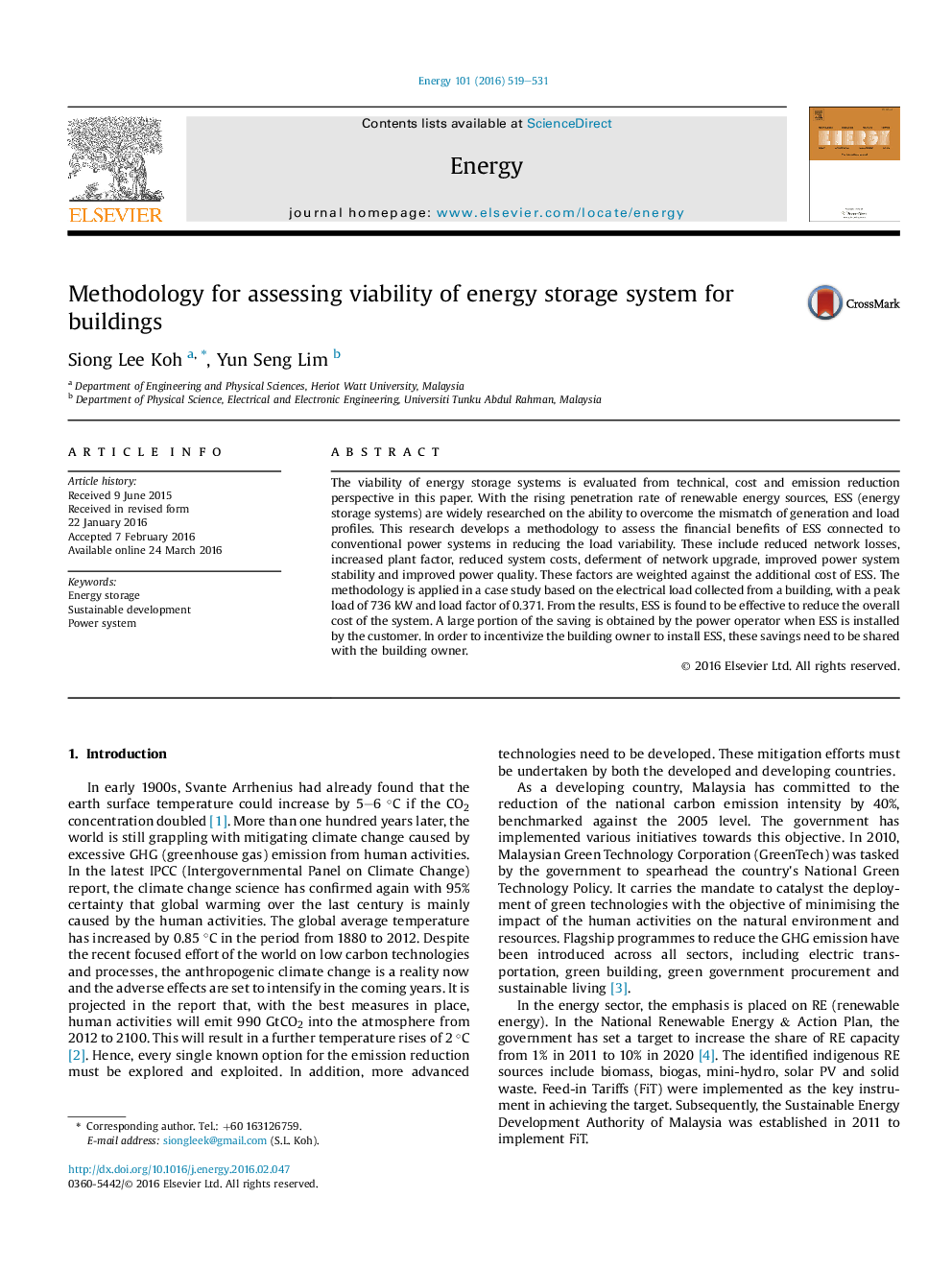| Article ID | Journal | Published Year | Pages | File Type |
|---|---|---|---|---|
| 1731052 | Energy | 2016 | 13 Pages |
•Methodology to access the viability of for buildings.•Financial benefits of energy storage systems from reduced the load variability.•Reduced network losses, increased plant factor, and deferment of network upgrade.•Improved power system stability and improved power quality.
The viability of energy storage systems is evaluated from technical, cost and emission reduction perspective in this paper. With the rising penetration rate of renewable energy sources, ESS (energy storage systems) are widely researched on the ability to overcome the mismatch of generation and load profiles. This research develops a methodology to assess the financial benefits of ESS connected to conventional power systems in reducing the load variability. These include reduced network losses, increased plant factor, reduced system costs, deferment of network upgrade, improved power system stability and improved power quality. These factors are weighted against the additional cost of ESS. The methodology is applied in a case study based on the electrical load collected from a building, with a peak load of 736 kW and load factor of 0.371. From the results, ESS is found to be effective to reduce the overall cost of the system. A large portion of the saving is obtained by the power operator when ESS is installed by the customer. In order to incentivize the building owner to install ESS, these savings need to be shared with the building owner.
